The MSI X370 XPower Gaming Titanium Motherboard Review: A Silver Flagship
by Gavin Bonshor on April 13, 2018 8:00 AM ESTMSI X370 XPower Gaming Titanium Board Features
The X370 XPower Gaming Titanium as you would expect has a wide variety of features and as far as an ATX sized X370 offering goes, it ticks a vast majority of boxes. With a lot of proverbial tricks up its sleeve, the XPower combines a lot of controllers featured on many mid-high motherboards currently on the market such as the Intel I211AT Gigabit networking controller and the fabled Realtek ALC1220 audio codec. Only the boards at the higher end of the spectrum feature U.2 storage connectivity such as this one, but in addition MSI have included dual M.2 ports on top of the six SATA 6Gbps you would typically expect.
| MSI X370 XPower Gaming Titanium ATX Motherboard | |
| Warranty Period | 2 Years |
| Product Page | Link |
| Price | $255 |
| Size | ATX |
| CPU Interface | AM4 |
| Chipset | AMD X370 |
| Memory Slots (DDR4) | Four DDR4 Supporting 64GB Dual Channel Up to DDR4-3200 |
| Video Outputs | HDMI 2.0, DisplayPort |
| Network Connectivity | Intel I211AT |
| Onboard Audio | Realtek ALC1220 |
| PCIe Slots for Graphics (from CPU) | 2 x PCIe 3.0 - x16 or x8/x8 with Ryzen - x8 or x8/x0 with 7th Gen and Ryzen APU |
| PCIe Slots for Other (from PCH) | 1 x PCIe 2.0 (x4) 3 x PCIe 2.0 (x1) |
| Onboard SATA | Six, RAID 0/1/10 |
| Onboard M.2 | 1 x PCIe 3.0 x4 - 22110 (top slot) 1 x PCIe 2.0 x4/SATA - 2280 (bottom slot) |
| USB 3.1 (10 Gbps) | 1 x Type-A 1 x Type-C 1 x Type-C (via header) |
| USB 3.0 (5 Gbps) | 4 x Type-A (Rear Panel) 4 via Header |
| USB 2.0 | 3 x Type-A (Rear Panel) 4 via Header |
| Power Connectors | 1 x 24-pin ATX 1 x 8-pin CPU 1 x 4-pin CPU |
| Fan Headers | 1 x CPU (4-pin) 1 x Water Pump (4-pin) 4 x System (4-pin) |
| IO Panel | 4 x USB 3.1 Type-A (USB 3.1 Gen 1) 1 x USB 3.1 Type-C (USB 3.1 Gen 2) 3 x USB 2.0 Type-A 1 x Network RJ-45 1 x HDMI 2.0 1 x DisplayPort 1 x Combo PS/2 5 x 3.5 mm Audio Jacks 1 x Optical S/PDIF 1 x Clear CMOS Button |
Visual Inspection
The most striking aspect of the visuals on the XPower is the silver titanium finish across the PCB and the heatsinks. This dominates the aesthetics and allows MSI’s Steel Armor to blend in naturally, as opposed to sticking out on a background of all-black PCB. In addition to the entirety of the PCB (front and back), the rear panel also has a similarly colored panel as well as both the chipset and the power delivery heatsinks.
Another element associated with the aesthetics is the built in LED lighting. MSI has implemented basic white LEDs around the board, but the majority of them are featured on the underside of the board along the audio PCB isolation line. Although they can be controlled and adjusted via the MSI Mystic Light RGB software, they are simply white LEDs and offer little customization other than changing how the lights are displayed. For RGB users there is a single 4-pin RGB LED connector available. In the top right hand corner of the board is a two-digit LED debug display for POST codes.
The power delivery on the X370 XPower starts with an International Rectifier IR35201 8-phase PWM controller that operates in a split 6+4 design; six being dedicated to the CPU, and four which features an IR3598 MOSFET doubler being used for the SOC. The use of doublers on the power delivery motherboards in this day and age is very common and isn’t usually a sign of weakness when it comes overclocking performance; even the highest end of motherboards do use them. What is interesting though is MSIs use of Nikos PK616BA MOSFETs for the CPU and twelve PK632BA MOSFETs making up the SOC section of the power delivery. The Nikos PK616BA MOSFETs are found on a variety of motherboards including MSI’s own B350 Tomahawk which we previously reviewed. MSI has however added an additional 4-pin power connector in addition to the standard 8-pin to feed power to the CPU.
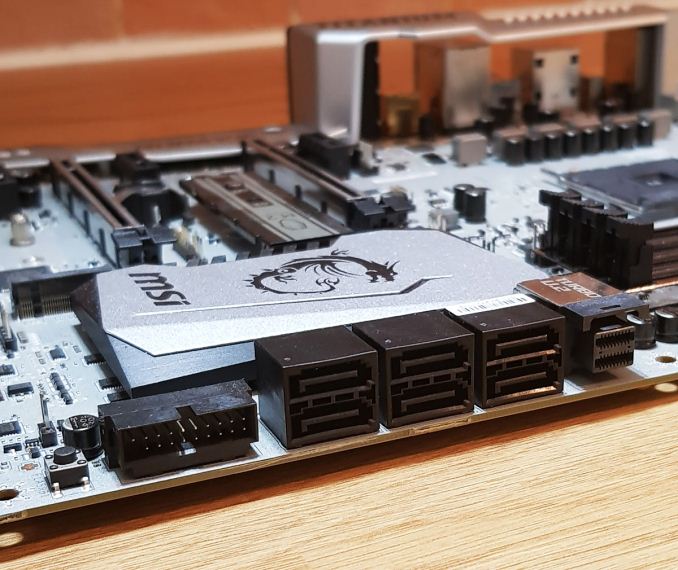
For storage, the board has dual M.2 slots, a single U.2 port, and a total of six SATA ports. The centrally located PCIe 3.0 x4 M.2 slot features MSI’s M.2 Shield, but the second PCIe 2.0 x4 M.2 slot from the chipset does not. That first M.2 slot is switched with the U.2 slot, as shown in the block diagram below on the right, while the second M.2 slot is switched with the PCIe 2.0 x4 slot on the bottom of the motherboard.
The six SATA ports are on the right-hand side and support RAID 0, 1, and 10 arrays. Just above these is the single U.2 port and a USB 3.0 header.
The MSI X370 XPower features a relatively 'standard' PCIe layout with a total of three full-length PCIe slots. The top two, which are connected to the CPU, feature MSI Steel Armor to bolster the strength of the slots whereas the bottom does not. 2-way NVIDIA SLI and AMD Crossfire are both openly supported with the lanes operating in x8/x8 when both the main slots are populated. There is also a single 6-pin PCIe connector for additional power when two high-powered cards in play. There is also three PCIe x1 slots for other peripherals.
The X370 XPower Gaming Titanium offers a total of four memory slots with a maximum of 64GB, and up to DDR4-3200 listed as the on-the-box rating in dual channel mode. The memory slots also have reinforcement, similar to the PCIe slots.
In regards to USB connectivity, the X370 XPower has a single internal header for USB 3.1 from the chipset, and uses an ASMedia ASM2142 controller to offer a single Type-C port and a single Type-A port on the rear panel.There is also four USB 3.0 ports and a set of three USB 2.0 ports in play. One of these ports is vertical rather than horizontal, and is earmarked for the BIOS Flashback+ utility.
BIOS Flashback+ allows users to update the BIOS without having a CPU, DRAM, or GPU, in play. It is enabled via the vertical USB 2.0 port when a USB stick with an updated BIOS (with a particular file name, details in the manual) is inserted and the button to the left of the USB port is pressed.
For video with the new APUs, the XPower has a HDMI 2.0 output as well as a DisplayPort output. The rear panel also has the integrated Intel I211-AT gigabit ethernet and the audio jack setup for the Realtek ALC1220 audio.
The onboard audio is driven by the Realtek ALC1220 codec which found on virtually all of the high-end motherboards in the market. What makes the XPower different from the rest is the addition of a Texas Instruments OPA1652 OP-AMP. While this isn’t an overly expensive OP-AMP for MSI to use, it did give a better result in our testing. Another element to consider is the PCB separation between the rest of the PCB and the audio PCB area, as well as the use of Nippon Chemi-Con audio capacitors.


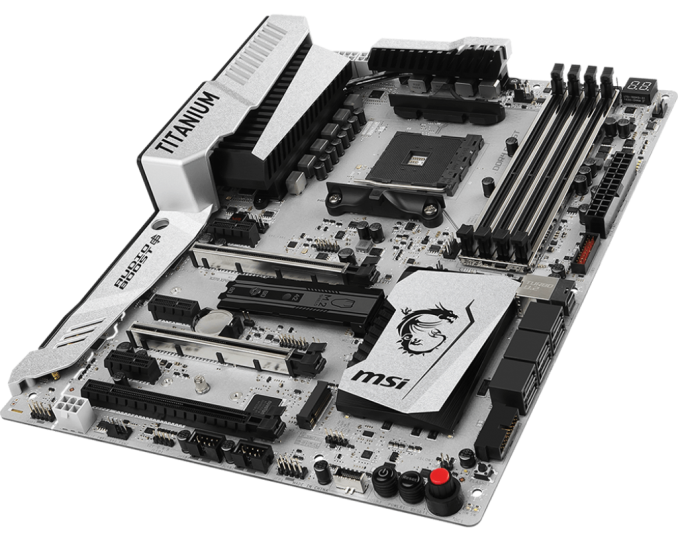
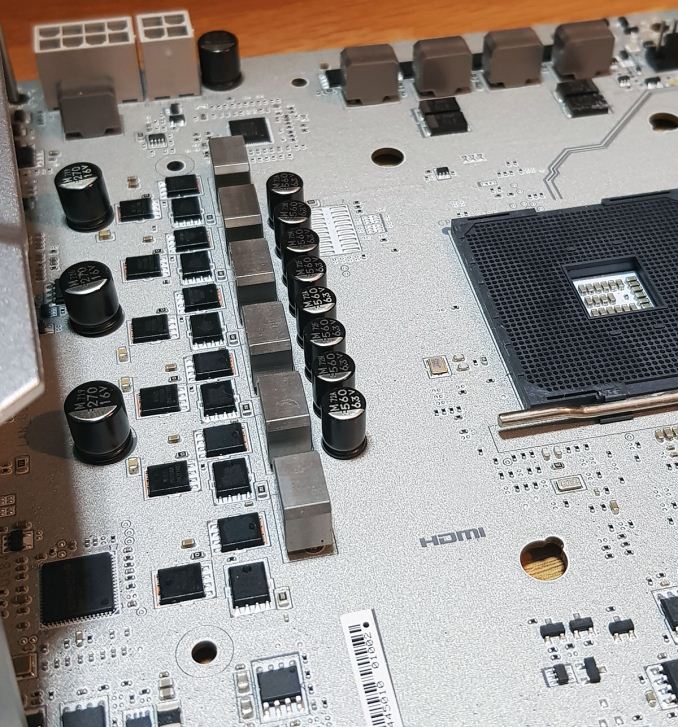
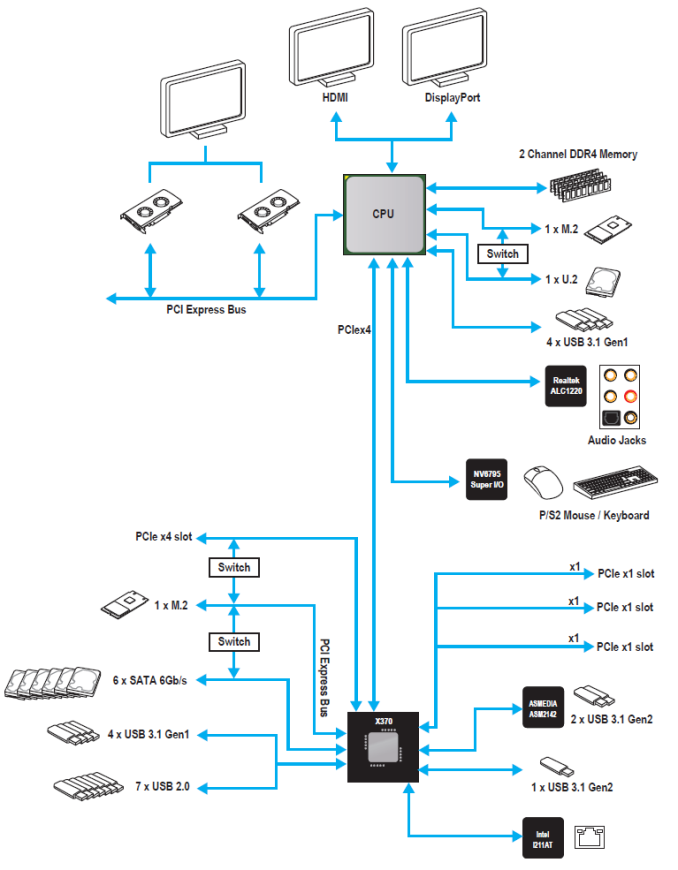
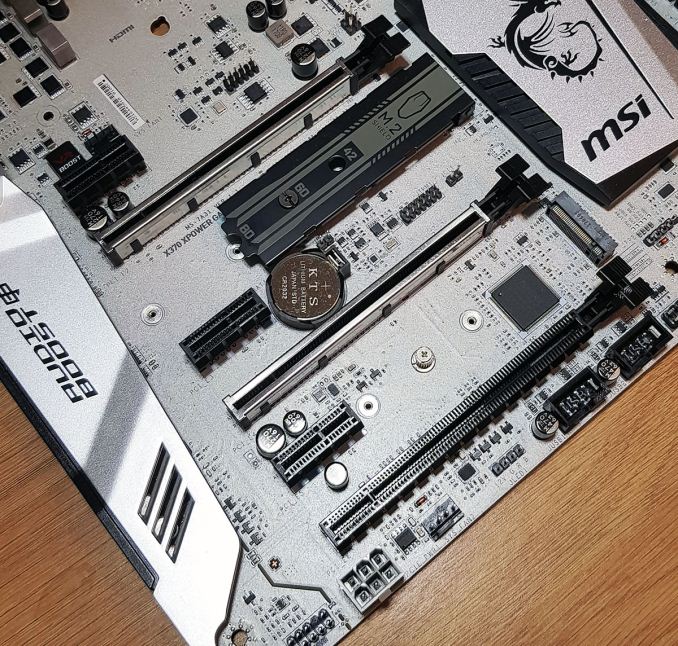
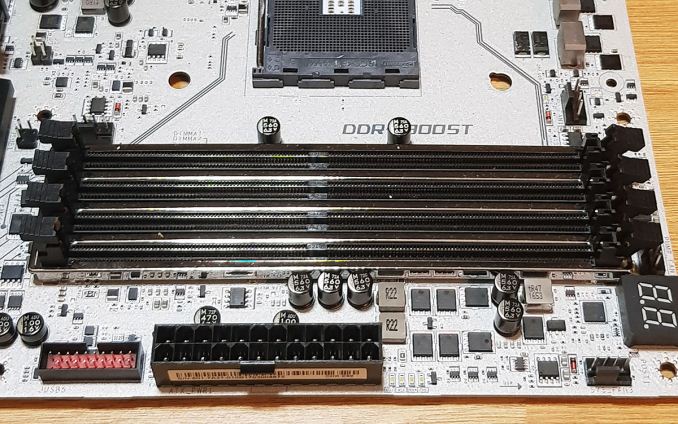
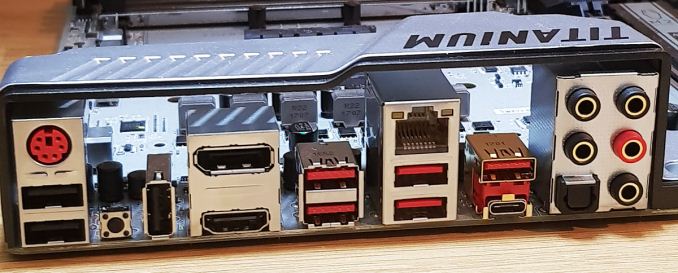
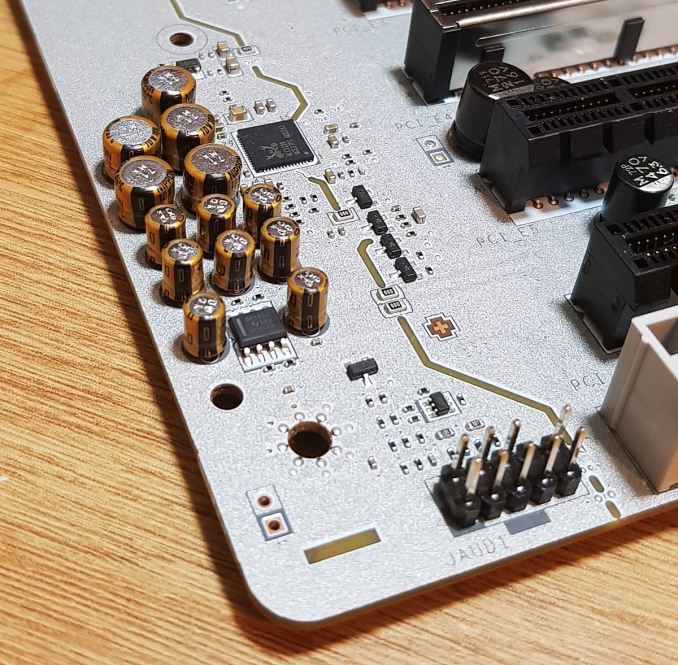








19 Comments
View All Comments
T1beriu - Friday, April 13, 2018 - link
BIOS Build Date: 09/19/2017.WOW.
T1beriu - Friday, April 13, 2018 - link
I see that MSI released 2 BIOS versions since then.Ian Cutress - Friday, April 13, 2018 - link
That's partly my fault. Gavin tested this board back in late January, wrote it up over Feb, and it's been in my to-edit list for a few weeks. The two BIOS revisions were 1/29 and 3/19, mostly relating to new processor support and some more memory tweaks, as well as Win7 support.ManuelDiego - Friday, April 13, 2018 - link
Plus we are like 1 week away of X470, right? Not sure i see the point of releasing this board now, TBH.Ian Cutress - Friday, April 13, 2018 - link
Bottom of first page, questions answered.ManuelDiego - Friday, April 13, 2018 - link
I see, thanks for the addendum, Dr. Cutress.Topweasel - Friday, April 13, 2018 - link
Those are kind of BS answers for a lack of effort to review the products when they launched over a year ago. This was MSI's Launch flagship motherboard, they only now (ish) gave you a board to review? I doubt that, considering it's price, and all of the review samples that AMD gave out were with the Crosshair, MSI would have been handing these out like candy hoping reviews would get people to get this over the RoG.Above you noted that the review was basically finished 4 months ago. Back when people would have actively purchasing X370 boards. While I am sure that the mobo companies will sell this next to the new boards, without steep discounts (ones that a Premium board like this are unlikely to get to make them less interesting than a mid level X470 board) the default purchasing habits will be the new series. Topping it off people buying this late into the cycle want to know more about quirks, long term issues, Bios update history, support level type stuff to make sure they are getting the most stable platform on which to build their computer around. Stuff that is missing because this isn't a long term review, it's a normal review near the end of its natural cycle.
I know the real answer and while disappointing you shouldn't be ashamed of. We want the best technical information and the best approach. You give us that, and the real answer being you were backed up with all of the hardware launches last year that you prioritized products that mattered to the larger portion of your readership I think most of us understand. Otherwise considering it was pretty much a year on the dot that you started reviewing products ancillary to the Ryzen release. That the secrecy behind reviewing products this late into the cycle has more to do with Purch's relationship with Intel and not down to workload.
Ryan Smith - Friday, April 13, 2018 - link
"That the secrecy behind reviewing products this late into the cycle has more to do with Purch's relationship with Intel and not down to workload. "Let me be 100% crystal clear here: AnandTech's editorial calendar is set by me. Purch has taken an extremely light hand to AnandTech overall, and has never dictated what content we should run.
It does a massive disservice to Ian, Gavin, and my other editors when anyone accuses, insinuates, or otherwise implies that they are acting with ulterior, unethical motives. These are some of the hardest working people I know - Ian in particular - and it was my choice alone in determining our editorial priorities. Which yes, meant having Ian work on some other things (like digging into the CTS story) ahead of editing motherboard reviews.
Topweasel - Friday, April 13, 2018 - link
I want to point out I wasn't actually suggesting that was the case. I am sure it's all about hands available and deciding what products will get the most re-viewership (for example more I7's than Ryzen 7's sold means more people would be interested in Z270/370 reviews than X370). But it's better to actually say that than try to play it off like all of a sudden you got 10 AM4 300 series boards in a couple months before the refresh and that there is this demand for reviews of the product. This isn't the usually week or two later with more in depth information, this is nearing the end of a products viable marketable sales (but as noted not the end of sales).But dancing around the actual reason for the delay and considering the poorness of the timing (almost exactly a year after launch). It causes people to generate conspiracy theories. Without knowing better that would be the one that would come to my head. Why almost exactly a year, what is the significance of the year? It almost seems like a time limited exclusivity deal like games some times have. It would then spiral from there, why? Well Purch and Intel have a relationship about very high level advertising through regular media deal going on.
Sure some fans aren't going to like being told their product doesn't generate enough views. But obviously a choice was already made that was going that their readership wasn't worth the ROI in man hours. So it's not like that guy not wanting to read a review after being told that is going impact you that much since again his market was to small for the effort anyways. But in the end most reasonable people are going to welcome more transparency there rather than looking for another reason to call Anandtech a schill site. I don't think it is. Never have.
Just think about that in the future. It's one of the things that was great about Anandtech back in the day and will keep the site a worthy one coming back. Don't pull the punches on reviews, don't dance around choices made. Just be as straightforward and technical as possible. Doing otherwise invites critism and over scrutinization.
Qasar - Saturday, April 14, 2018 - link
Topweasel here is a better idea....if you think you can do better then anandtech does now.. then how about you start your own review site, and do them yourself based on what you feel your readers will want at any given time.
the staff here have stated over and over again, they decide what gets reviewed, when and when it is posted on here, should x370 and AM4 related stuff have been reviewed months ago.. yes.. but we dont know their schedule, work load, or whats in the queue to be reviewed or posted. i remember a post a while back that said they have a new reviewer for amd related product and are getting him up to speed, that could of been part of the delay... either way. i keep coming back here cause of the quality of these reviews and write ups, and how deep the guys and anandtech have always gone into something on the tech side.. and i will keep coming back for that.. even if a lot of it.. i dont understand cause its above my pay grade :-) this is one of the best places to go for reviews and the tech inside a lot of the products on here